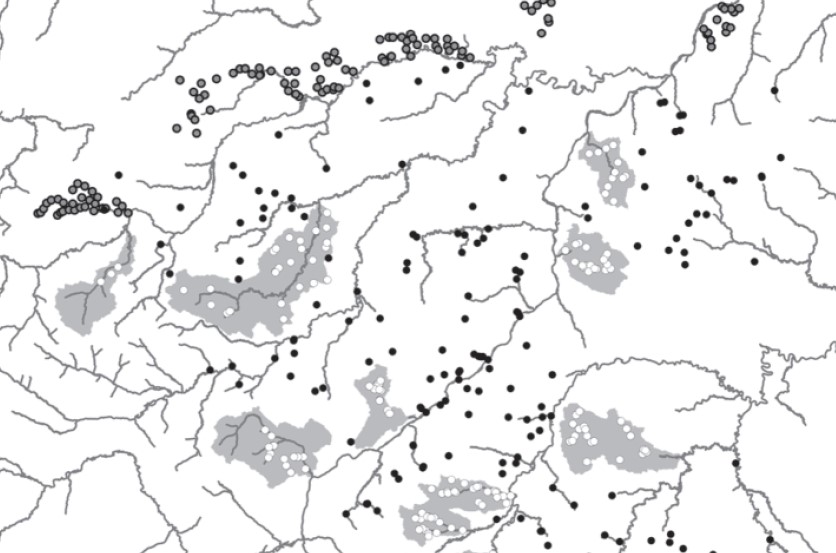Abstract
We developed an automated procedure for modeling spatial distribution of fish occurrence using logistic regression models and geographic information system (GIS) tools. Predictors were measured from a digital elevation model (DEM) and stream layers. We evaluated the accuracy of GIS measures of reach slope through a comparison with field measures. Resource selection function models were used to explain presence-absence of bull trout (Salvelinus confluentus), rainbow trout, (Oncorhynchus mykiss), nonnative brook trout (Salvelinus fontinalis), and all fishes. Our models were extrapolated based on low, medium, and high levels of probability to produce reach-scale maps across 12 000 km2. We attempted to improve models by adding land-use variables; however, the terrain best suited to road building and harvest also contained the habitat selected by rainbow trout, whereas bull trout generally selected terrain too steep for land use. These confounding factors emphasize the need for process-based investigations in addition to correlative approaches to identify habitat requirements. This automated method provides a rapid evaluation of fish habitat across remote areas useful for salmonid conservation and research planning.
Citation
Richard J McCleary and Marwan A Hassan. 2011. Predictive modeling and spatial mapping of fish distributions in small streams of the Canadian Rocky Mountain foothills. Canadian Journal of Fisheries and Aquatic Sciences. 65(2): 319-333. https://doi.org/10.1139/f07-161







